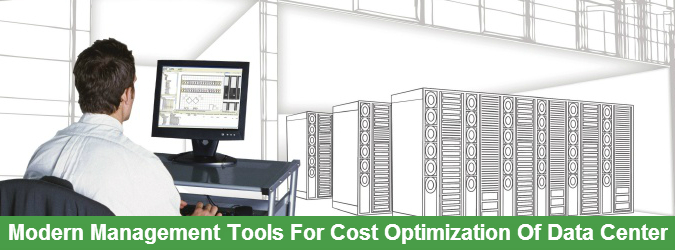Modern Tools For Cost Optimization Of Datacenter
Before the dizzying increases in operating expenses of the companies registered in recent times, executives began to consider the data center as a viable source of savings in capital and operating costs. What is the key? The software for data center infrastructure management (DCIM).
Advanced DCIM tools help reduce costs, prolonging the life of the physical infrastructure of the existing data center, simplifying the planning and operational, reducing the energy consumption both in infrastructure as IT systems and allowing conduct proactive monitoring to protect valuable productive time for business. There are examples of software that act as a comprehensive “layer” of the entire integrated physical infrastructure of the data center and enable the company to obtain between 10% and 20% savings in initial capital costs. Total visibility enables managers to make informed decisions about capacity levels in order to adapt the existing physical infrastructure to support major IT loads. These adaptations help to optimize capital, slowing the generation of additional capital expenditure requirements.
The initial sizing for risk protection systems was in the past. The more power and more cooling surface. The approach of excess supply generated inefficient, costly and monolithic data centers. Now the DCIM software enables true rap idea of “doing more with less”.
By turning data points into useful information, both for executives and for the personnel and infrastructure systems, this software helps optimize servers by removing or consolidation and, in turn, expand or reduce the physical infrastructure due the actual capacity requirements, although these vary throughout the year along with the swings of the business. Thus, for example, it is possible to optimize resources, decreasing the power and cooling capacity reservation to 50% or 60%.
The high visibility afforded by these tools provides the ability to incorporate changes according to business growth. You can see the equipment and resources available in the data center related to physical infrastructure and act on that data. For example, if you have to incorporate 50 new servers, you can determine quickly and simply, if there is enough space, power and cooling to do it, and if so, which incorporate them. Resolved location of the racks, you can analyze the impact of the new servers in PUE (power usage effectiveness).
The analysis offered by the DCIM software tools is essential to smart energy management, especially since the reduction in energy consumption can enable significant cost savings. Some allow exploring subsystems (eg, UPS) to detect which area of the data center is consumed energy. The software produces models of systems such as power and cooling, to help you decide where to look for the economy without increasing the risks of systems.
Data centers are the strategic business assets, it is necessary to consider the increasing computational complexity. Advanced approaches such as consolidation (which creates more density) and virtualization (which produces points of dynamic heat) become even more critical to improve the control and automation.
In the long term, the physical infrastructure of data centers, combined with an integrated and efficient management tool, allows you to save up to 30% in costs for physical data center infrastructure in ten years, by optimizing the management of resources and energy. This makes it possible to leverage the value of strategic business that offers data center.
Resources:
- How Cloud Computing Is Changing The Labor Market - March 25, 2015
- Adopting Infrastructure as a Service Can be a Good Deal - March 17, 2015
- Will Virtualize? Take These Six Points Into Consideration - March 12, 2015
